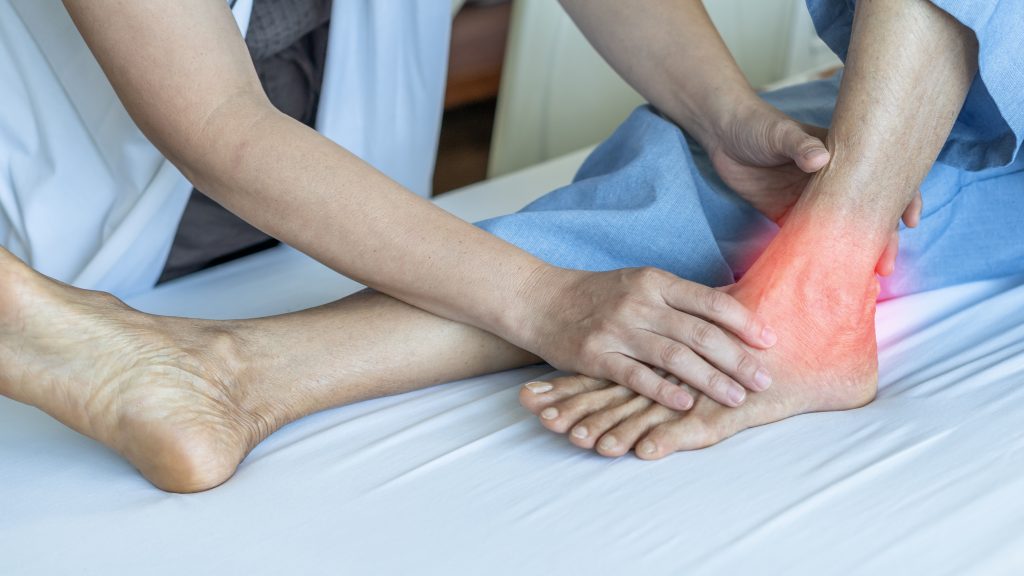How to Tell When Your Ankle is Broken (and What to Do if It Is)
It’s not a question anyone ever wants to ask, but it’s the only thing you can think about when the situation presents itself: Did I just break my ankle?
Our ankles endure plenty of forces just in day-to-day activities, and chances are decent that you’ll end up with an ankle injury more than once in your life. The pain can range from a small twinge to rolling, hobbling agony, and it’s that upper part of the scale where questions about ankle fractures start to arise.
While it might seem silly to think you might not be able to tell immediately that you broke one of your own bones, it happens more often than you might think – especially when the ankle is involved. We have seen our share of cases when a patient thought they had a bad ankle sprain, but it turned out there was a fracture, too.
And that’s a very understandable mistake to make! Severe sprains and fractures can feel remarkably similar, so the question of how to tell whether you’ve actually broken your ankle or not is a really common and important one to ask.
There are a few ways you might be able to tell between an ankle sprain and a full-on fracture, but it’s important to heed this one disclaimer:

If You Need to Ask, You Already Need Help
The difference between a fracture and a bad sprain is not that one needs medical attention and the other only some rest at home.
If you have sprained your ankle so badly that you think it might be broken, you have absolutely done enough damage to your ankle that you should see us right away.
In fact, even less severe ankle sprains should warrant at least a call to us to let us know what happened. Even a relatively low-intensity sprain can result in ankle instability if it isn’t allowed to heal properly. This can increase your chances of further injuries, which can further destabilize the ankle, and it will only keep going downhill from there.
Never hesitate to contact us about any ankle injuries or problems you might have. Even if it turns out to be something easily treatable with rest at home, we will have a record we can look back on should we need to in the future. Remember that we can easily see you via telemedicine as well!
Tips for Determining Whether Your Ankle is Broken
Many symptoms are shared between sprains and fractures, including:
- Pain
- Bruising
- Swelling
- Trouble bearing weight on the injured ankle (and you certainly shouldn’t be trying to!)
However, there are a few symptoms that might suggest one type of injury over the other.
- A change in ankle shape. While swelling can certainly make your ankle look larger, any other sign of shifting in the shape of the ankle beyond that tends to indicate that a bone has been broken.
- A noise at the time of injury. A crack at the time of injury tends to be more indicative of a broken bone, while a popping sound tends to be associated more with sprains. It’s more than understandable if you were not necessarily paying attention to the sound your ankle made at the time of your injury, though.
- The location of the pain. Where the pain is centered can help determine what is actually injured. If tenderness is centralized above the bone, it is more likely a fracture. If it’s aching more in the softer parts of your ankle, the chances are higher it’s a sprain.
- Numbness or tingling. These tend to be signs more common to a fracture than a sprain.
Please keep in mind that the above symptoms are not guarantees of sprain or fracture. They are merely indications that the injury has a greater possibility of being one or the other. The most effective way to determine whether you have an ankle sprain or a broken ankle is through professional evaluation and potentially some imaging tests.
Never Delay on Ankle Care
It’s important for your ankles to last you as long as possible, serving as a foundation for comfortable motion.
Whether you suspect a sprain, fracture, instability, or other potential problem with your ankle, never hesitate to reach out to us for help. We will always serve you with a focus on relieving pain, maintaining function, and getting you back to doing what you love as quickly, safely, and effectively as we can.
Schedule an appointment at our Ladera Ranch office by calling (949) 364-9255 (WALK) or by filling out our online contact form.
